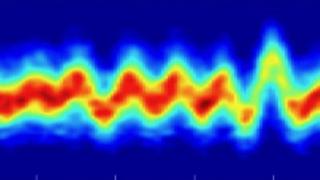The shortest light pulses ever generated
One billionth of a billionth of a second - extremely short light pulses, which can be used to analyze the dynamics of electrons in matter, are central research topics in the Cluster of Excellence "CUI: Advanced Imaging of Matter". On 10 December 2023, the Nobel Prize in Physics will be awarded in Stockholm for the development of experimental methods to generate such attosecond lightpulses.
CUI spokesperson Francesca Calegari from CFEL, professor at Universität Hamburg and leading scientist at DESY, describes the field of research, the links to the Cluster research and her personal connections to the three researchers awarded this year's Nobel Prize in Physics, Anne L’Huillier (Universität Lund, Sweden), Pierre Agostini (Ohio State University, Columbus, USA) and Ferenc Krausz (Ludwig-Maximilians-Universität München and Max Planck Institute of Quantum Optics).
In 2020, researchers at CFEL have generated attosecond light pulses by using ad-hoc synthesized optical waveforms. Foto: AG Kärtner, CFEL
In a second interview, Cluster spokesperson Prof. Francesca Calegari presents the research field of this year's Nobel Prize in Physics. This area is also one of the central Cluster topics.
Could you describe the research the Nobel Prize winners were honored for in a few sentences?
This year’s Nobel Prize in Physics has been awarded for the shortest light pulses ever generated by humanity, namely light pulses lasting only for a few tens of billionths of a billionth of a second (attoseconds). The generation of these ultrashort light transients is only possible via an extremely non-linear optical process dubbed High-order harmonic generation (HHG) and it is key for the study of the electron dynamics in matter. Electrons are the “glue” that holds nuclei together, and they determine the physical and chemical properties of matter. Since they move at the attosecond time scale, one needs light pulses of the same temporal duration to capture their motion. Attosecond technology has enabled the possibility to observe extremely fast processes such as the characteristic temporal delays in the electron photoemission from different atomic and molecular orbitals or the light-activated charge migration occurring along biomolecular building blocks.
This is very close to the research in the Cluster of Excellence "CUI: Advanced Imaging of Matter". Where exactly are the links?
The news of this year’s Nobel Prize in Physics has been particularly exciting for many of us in the Cluster. In Research Area B, we have several groups active in the attosecond science field: On the one hand there is a strong technological effort in shaping the next generation of attosecond light sources based on waveform synthesis or ultrashort UV light generation, and on the other hand experiments are carried out in the attempt of controlling the molecular reactivity at the electron time scale. Moreover, advanced theoretical modeling has been key in revealing electronic processes occurring in complex targets such as solvated molecules, water clusters, liquids and solids.
Do you know the award winners personally? Do you meet at conferences?
I personally know Anne L’Huillier and Ferenc Krausz and often met them at conferences. I collaborated once with Ferenc Krausz via one of the strong groups at his institute, and we co-authored a work on the attosecond chronoscopy of electron scattering in dielectric nanoparticles. I am very close to the group of Anne L’Huillier and her co-workers. We have been actively working to create a broad scientific collaboration between Hamburg University, DESY and Lund University by founding HELIOS (a joint international graduate school) of which Anne is one of the PIs.
In which direction do you think this research will develop in the future? What are the next steps?
A very exciting development in recent years has been offered by X-ray Free Electron Lasers, which can now produce as well attosecond light pulses but with much higher photon flux and higher photon energy compared to the conventional table top sources. With the new attosecond capabilities upcoming at the European XFEL we will ultimately be able to record the “quantum” movie of the molecular dynamics and capture the electrons moving along a molecular backbone with diffractive imaging techniques.
What potential applications do you see for the future?
Going even beyond our ability to observe, is the possibility to control: in the near future, attosecond light sources will be used to control the outcome of selected chemical reactions or to speed up electronics by driving currents in bulk at PHz frequencies. These capabilities have the potential to transform into robust tools for efficient light harvesting with applications in biochemistry, nanoscience, electronics, environmental science, and energy conversion.
